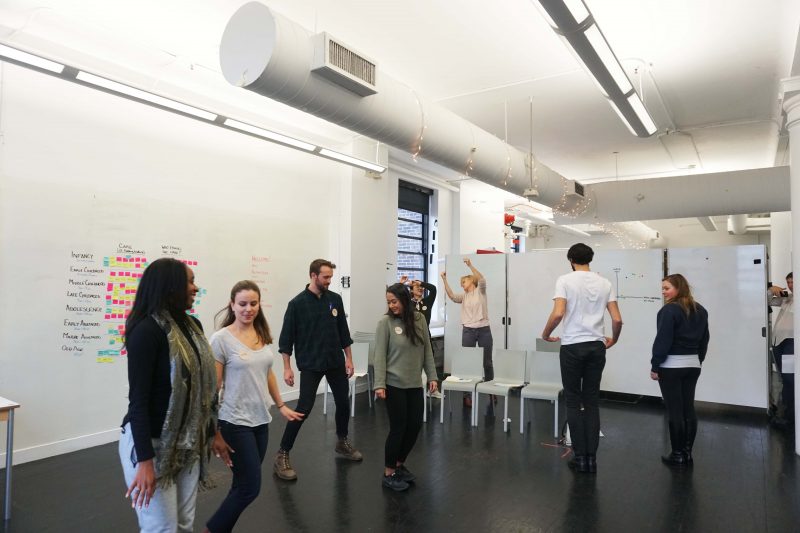A first-person account of designing with the body
Posted on December 17, 2018In talking about ‘becoming-with’1, that is the practice of multispecies worlding and recuperating, the difficulties perhaps manifest themselves in the possibilities of ‘how’—of pedagogical strategies that allow bodies to sense and respond in responsibility with others, to create openings and formulate conditions to encounter new relational context with care.
Rosner’s electronic quilt2 offers a compelling case in which intersubjective understanding and multispecies healing can be conjured as ontological bridges between craftwork and techno-centric engineering are critically fabulated. But perhaps, a more immediate and urgent design practice is to begin with, or rather return to, one’s own body(-ies). That is, to come back to a very basic question of how to recognize and identify with the bodies that are physically, historically, and culturally different from your own—bodies that are deeply embedded in a plurality of experiences; that is to question the meaning of being side by side, of being a companion with one another using one very own bones and muscle, pulses and beats, through gestures and stillness in this oscillating and fragile time.
Trauma can turn the world into a gathering of aliens.3
In ‘The Body Keeps the Score’, Bessel Van der Kolk draws the connection between trauma and affective capacities of one’s body, positing that the accumulation of trauma deepens the divide between one’s sense of self and damages one’s attachment with the world. Repetitive misattunement between the bodies in the process of exchanging care, that is the act of giving and receiving, of directing attention to and moving towards bodies in both kinesthetic and emotional sense, breeds disconnection and further dislocates our capabilities to care for others. The velocity to which subjectivities multiple and divide ferments trauma into all conditions of being, agitating the friction between these increasingly isolated bubbles. Restoring synchronicity, rhythmicity and reciprocity between the bodies hence becomes a critical foundation of multispecies recuperations.
How then do we attune, in stillness and in movement, with others?
In our studio work for Design for Living and Dying, we explore movement practice as a way to understand the contours of how we think, reason, act, and feel in response to others, and ultimately, to manifest attunement. Experiments in individual and collective movements, ranging from mimicking, and responding using body parts to voluntarily forfeiting a bodily function, help to track and unveil the boundaries of everyday movements. Albeit challenging, it was an enriching and sometimes hallucinatory experience as one is asked to be quiet and attend to the tiniest movement of your own and other bodies. It evokes somewhat a different sense of aesthetics when threads between bodies are realized—in harmony or in chaos. It is perhaps an aesthetics of care—of an appreciative nature—as even when signs of unpleasant and discomfort is present, there is also a prevalent sense of togetherness. The healing process thus has a chance to begin, even when trauma is not explicitly manifested in concrete words, ideas, and stories.

Movement-based attunement workshop. Partners: Anneke, Stephanie, Yilin.
Designing with the body presents a way to question and undo the bounded rationalism that underlies human exceptionalism, as one moves and challenges one’s capacity of attunement with other human and non-human bodies. It does not deviate from the tradition of thinking and making yet the intimate proximity to the ‘tool’ perhaps provides a fuller, richer, and more center engagement with the act of design. The danger of locking one’s body in a certain ecosystem of interactions is that it directly limits the space one allows oneself to act, neutering the capacity to perceive and appreciate the aesthetics of otherness. Redirecting the attention to the bodies is possibly a crucial first step to undo this lock-in position and usher in collective healing.
-Nam
(1) Staying with the trouble, Donna Haraway
(2) Critical fabulations: reworking the methods and margins of design, Daniela K. Rosner
(3) The body keeps the score, Bessel Van der Kolk